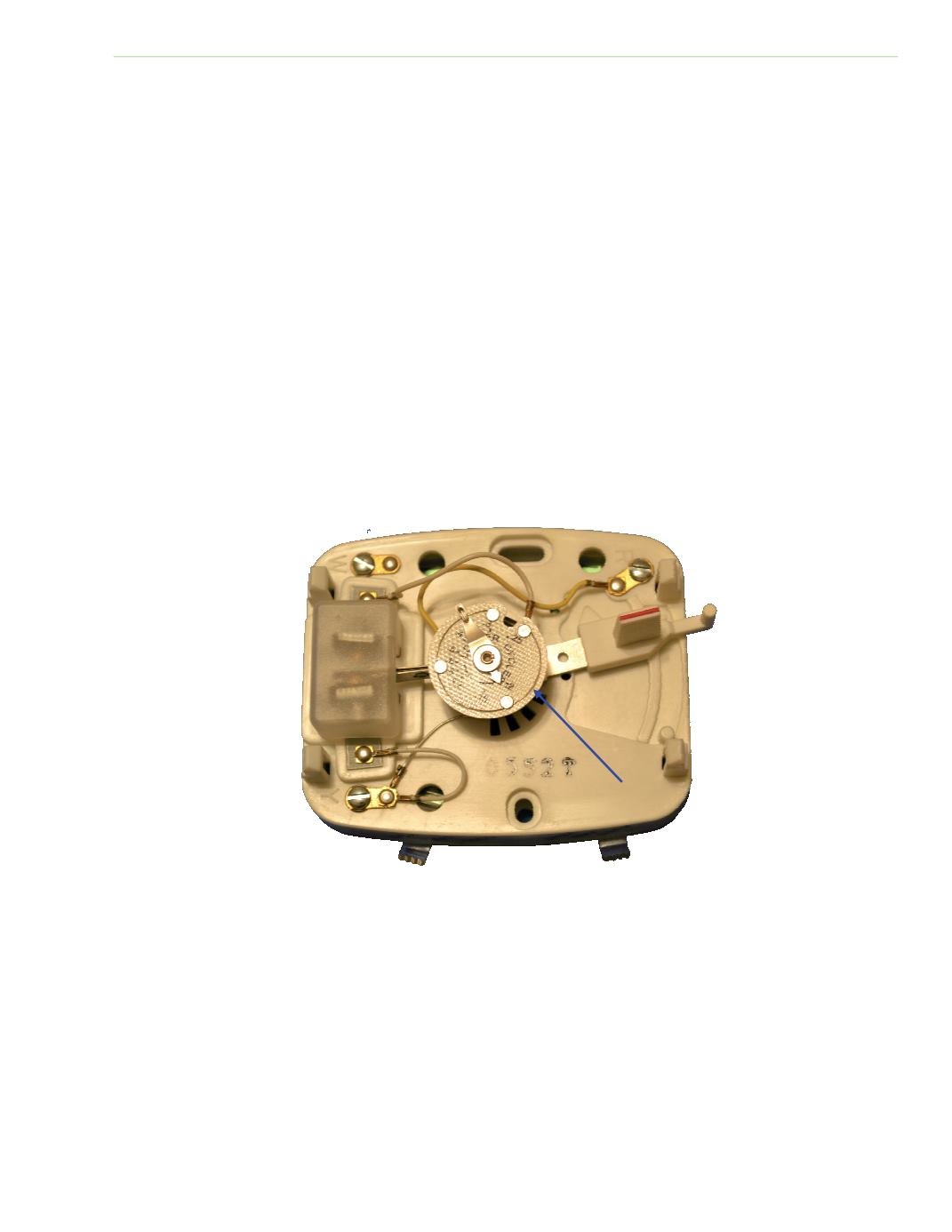

Electrical Theory & Applications for HVACR
Chapter 2: Circuits and Their Components
Page 35
breaks the circuit to the heat source. The blower operates for a longer period of Ɵme to cool the
furnace. This extra heat from the furnace heats the condiƟoned area to a higher temperature than
the set point of the thermostat. The heaƟng anƟcipator provides a liƩle heat to the thermostat
bimetal, making it break the heaƟng circuit before reaching the room set point and thus prevenƟng
overshoot.
A heat anƟcipator is wired in series with a heaƟng control circuit and is set according to the amperage
draw of the control circuit. Technicians must determine the amperage draw (by measuring the amps
between the R and W terminals on the thermostat sub‐base) while the furnace is operaƟng at a
steady state condiƟon. This usually occurs aŌer about one minute of operaƟon. If the anƟcipator is
set at higher amperage, system overshoot will occur; if it is set at lower amperage, system lag will
occur or possible anƟcipator burnout.
The cooling anƟcipator is a fixed resistor that is in the circuit when the cooling thermostat circuit is
open. It is parallel to the cooling contacts. The cooling anƟcipator provides heat to make the system
operate, before the condiƟoned temperate gets too high and prevents a lag in cooling.
Fig. 2‐30: Thermostat Heat AnƟcipator










